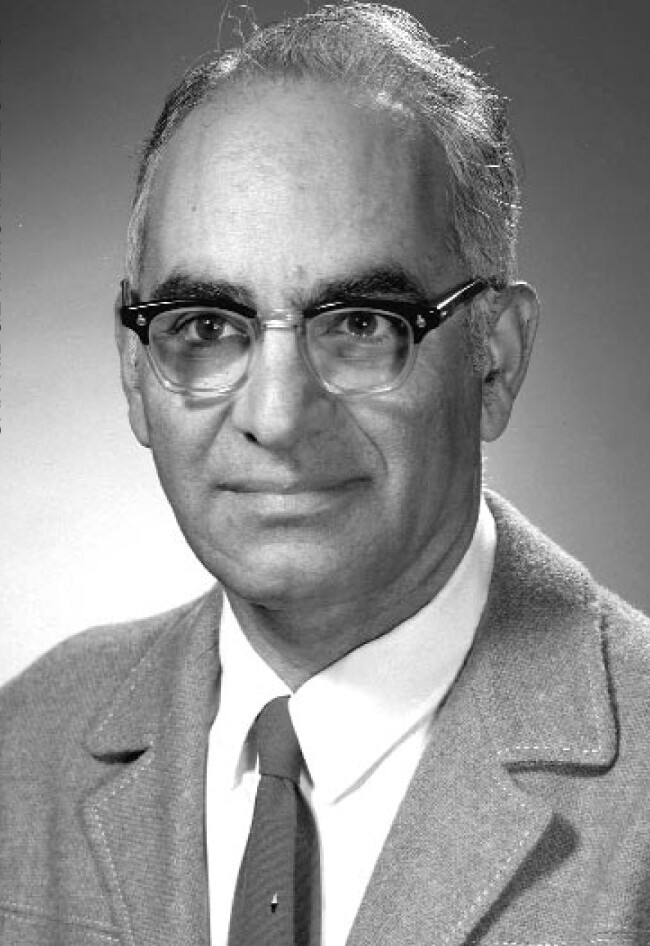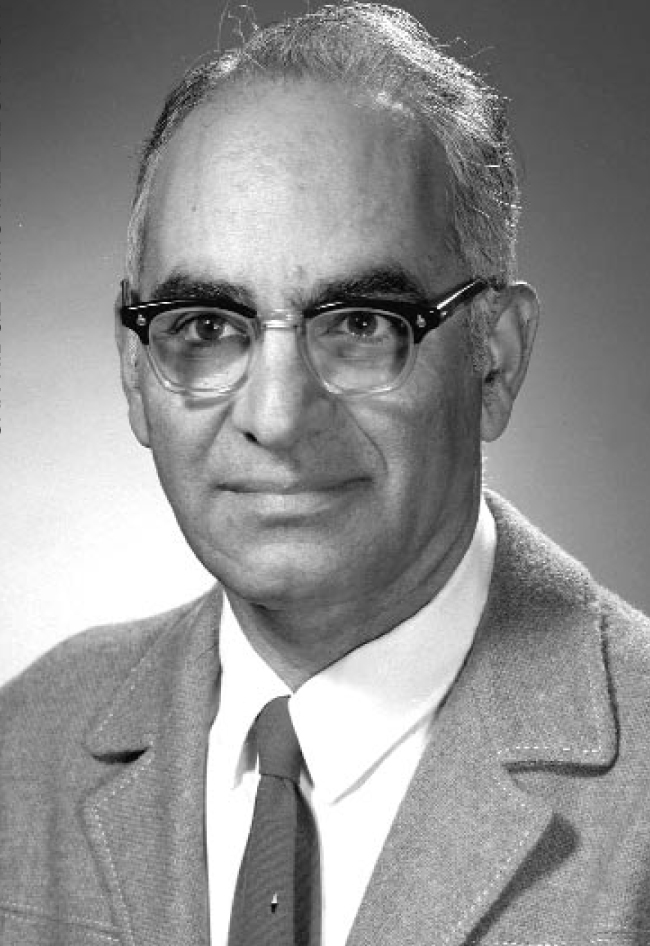Henri Arthur Levy
DOI: 10.1063/1.1688081
Henri Arthur Levy, a pioneer in neutron crystallography at Oak Ridge National Laboratory (ORNL), died of congestive heart failure on 25 March 2003 at his home in Oak Ridge, Tennessee.
Henri (who pronounced his name “Henry”) was born in Oxnard, California, on 12 September 1913. He attended Caltech, where he received his BA in chemistry in 1935 and his PhD in physical chemistry in 1938. His thesis included a section on second-order polarization energies in atoms, a theoretical topic proposed by Linus Pauling. Another section described electron diffraction studies done in cooperation with Lawrence Brockway. After receiving his degree, Henri stayed on at Caltech to work on x-ray crystallography.
In 1943, Henri joined Clinton Laboratories, the predecessor to ORNL, where he became an expert in the new field of radiochemistry. He extracted radioactive lanthanum from fission products to produce an intense radiation source needed at Los Alamos for testing the implosion bomb during World War II. That work formed the basis of articles he subsequently published on designing laboratories to handle radioactive materials.
As the war work wound down, Ernest Wollan and Clifford Shull began using a neutron beam from ORNL’s Graphite Reactor for diffraction studies on various crystalline powders. Henri quickly followed their example and set up a neutron diffraction instrument for chemical studies. In 1949, Selmer Peterson joined ORNL to work with Henri on a study of potassium hydrogen fluoride, which was of interest because the bifluoride ion would eventually prove to have a strong centered hydrogen bond between the fluorine atoms. Because their initial powder experiments were inconclusive, they proceeded with one of the first single-crystal neutron diffraction studies and produced a precise analysis of potassium hydrogen fluoride.
Henri and Peterson made other studies of hydrogen-bonded materials, including a detailed study of several phases of the ammonium halides. Their single-crystal study of heavy ice showed conclusively that Pauling’s postulate of disordered hydrogen bonding was correct. As a result, the Antarctic Place-names Commission later honored Levy and Peterson, along with others who had worked on water and ice, by naming islands in Antarctica’s Crystal Sound after them. Henri also made important studies of liquids by both x-ray and neutron diffraction, many of them in collaboration with Alfred Narten, also of ORNL. Notable was their 1967 x-ray study of water over the temperature range from 4 to 200°C.
Henri and his coworkers developed automatic data-collection equipment and computer programs to control experiments and analyze results. For the early single-crystal neutron diffraction work, he designed a mechanical device that permitted the experimenter to preset angles for rotation of the sample about one axis so that the intensities of 20 reflections could be measured automatically.
When one of the early electronic computers became available at ORNL in 1954, Henri’s group quickly put it to use for various crystallographic calculations. When the Oak Ridge Research Reactor came on line, Henri and his coworkers developed a three-circle diffractometer controlled by punched paper tape from the computer. The resulting data counts were punched on tape for automatic processing. When minicomputers became available in 1965, Henri’s group programmed the PDP-5 computer to control a four-circle Picker diffractometer, first as an x-ray instrument and then for neutron crystallography at ORNL’s High Flux Isotope Reactor Facility.
Henri and I developed and distributed a full-matrix, least-squares structure refinement program that was modified so often that the 1979 version listed nine authors. By 1981, that program had been cited more than 3000 times. A companion program permitted the calculation of various molecular parameters with their standard errors. We also created a method for correcting observed bond distances for the thermal motion of the atoms involved.
In 1978, Henri retired at the then mandatory age of 65. However, he continued to develop methods for combining electron microscope images to produce three-dimensional information.
Henri served as an officer of the American Crystallographic Association, first as secretary (1961–63), then as president-elect (1964), president (1965), and past president (1966). He was also a member of the US National Committee for Crystallography.
Henri joined the Smoky Mountains Hiking Club in 1945 and maintained his membership for the rest of his life. While hiking with this group, he met his future wife, Bettie Juresco. He later proposed to her on the Appalachian Trail.
Undoubtedly, Henri’s work has had a profound influence on our knowledge of the atomic and molecular structure of matter. Techniques that he pioneered are still being used to advance this knowledge.

OAK RIDGE NATIONAL LABORATORY

More about the Authors
William R. Busing. Oak Ridge, Tennessee, US .
